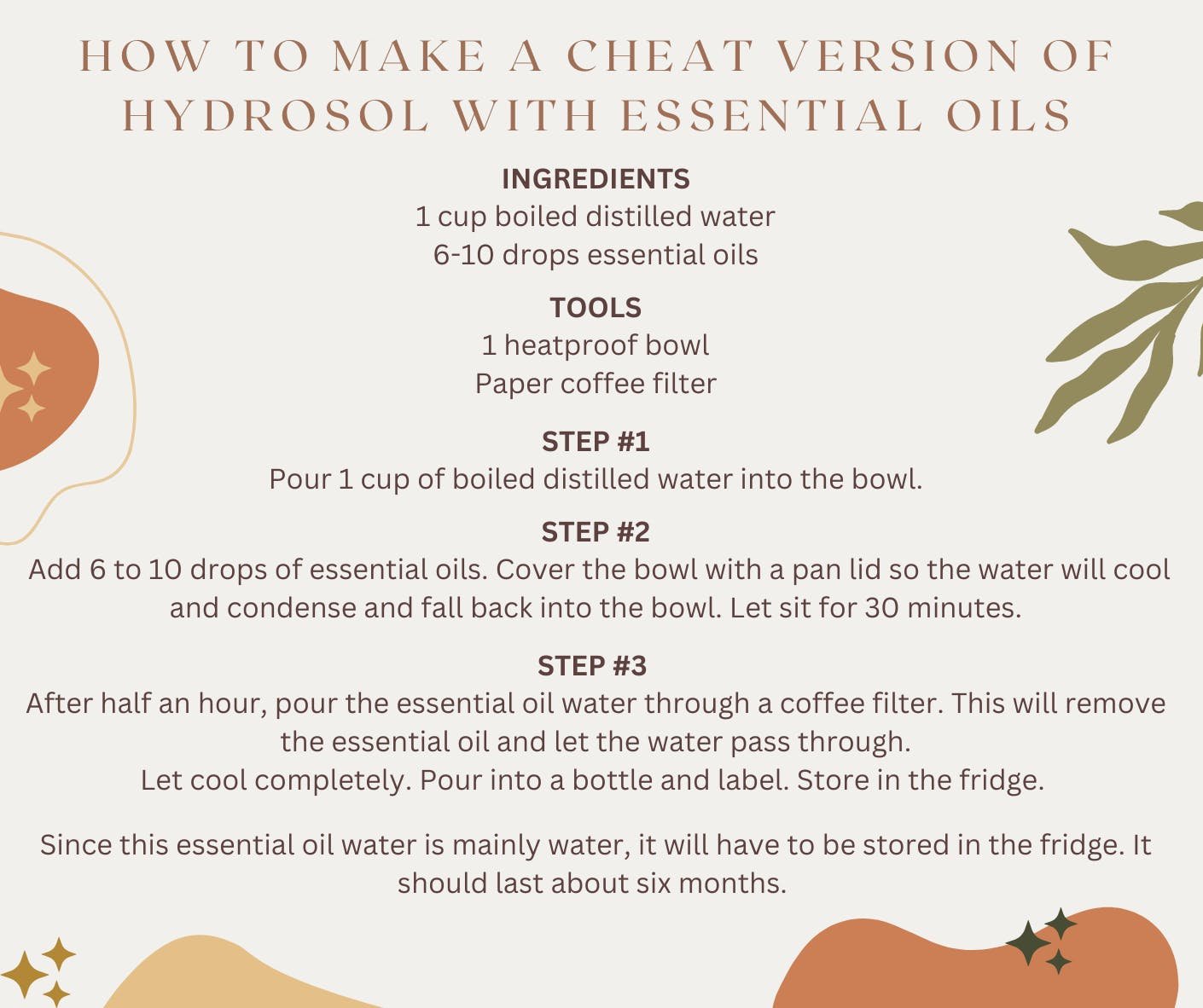3 facts about Hydrosols- and how you can create your own version using Essential Oils
What exactly are Hydrosols and how are they different to Essential Oils?
Hydrosols, sometimes called floral waters, are similar to essential oils; but they are less concentrated. Like essential oils, they are made by distilling the flowers, fruits or fresh leaves from plants. They typically smell similar to the essential oil from the same plant, however have a lighter, more subtle note. Sometimes the scent can be a little different because they are made from the water soluble parts of the plant and not the oil.
1. Hydrosols are perhaps the lesser known cousins to essential oils.
They are made in a similar way and retain most of the same properties and a lighter scent, but they are water based. Because they are water based they can be used in water based recipes without needing an emulsifier.
2. Since they are milder than essential oils, they are generally well tolerated by children, pets and the elderly who may not be able to use the essential oil counterpart.
Dilution, ratios for different purposes and age groups, and using essential oils safely around pets is something that I have been getting some questions about recently, so this is the topic I’ll be diving into innext weeks Newsletter.
3. Hydrosols can be used in most recipes in place of water. They have their own unique properties to enhance your recipes. Hydrosols can be used for face masks, hair care, facial toners, body sprays and room sprays.
What is the Difference Between Essential Oil and Hydrosol?
While both essential oils and hydrosols are made through steam distillation, there is a difference between the two products. During steam distillation, water vapor heats the plant material. The steam is then rapidly cooled so it condensed into a liquid.
The concentrated oil is then separated to create an essential oil. The water that is leftover is the hydrosol. Hydrosols are 98 to 99 percent water and only 1 to 2 percent plant matter.
Essential oils have a shelf life from three to eight years, depending on the oil. Hydrosols, however, only have a shelf life of 8 to 18 months.

